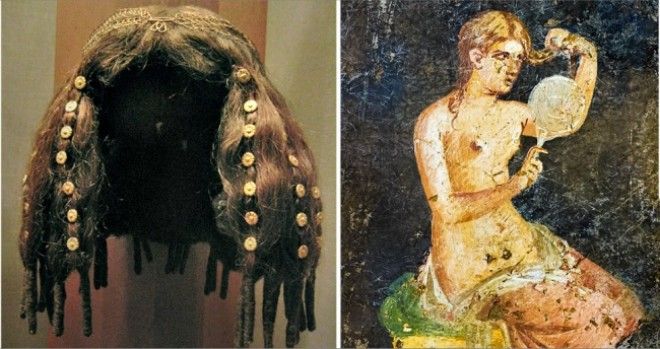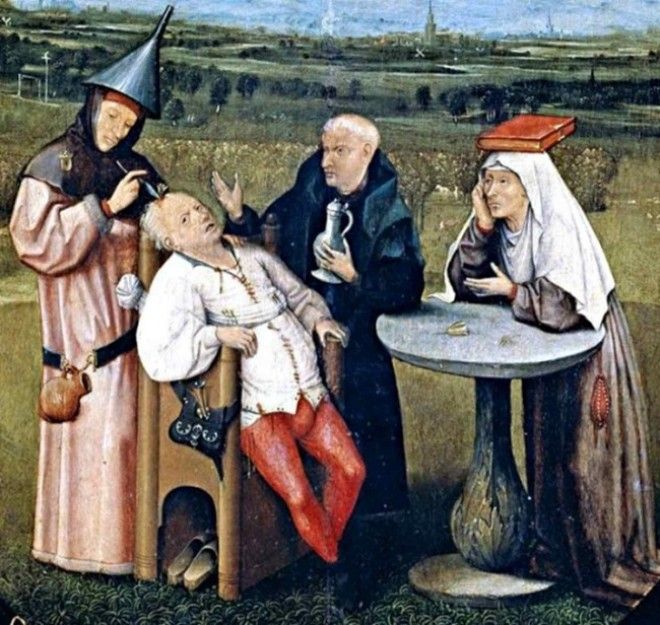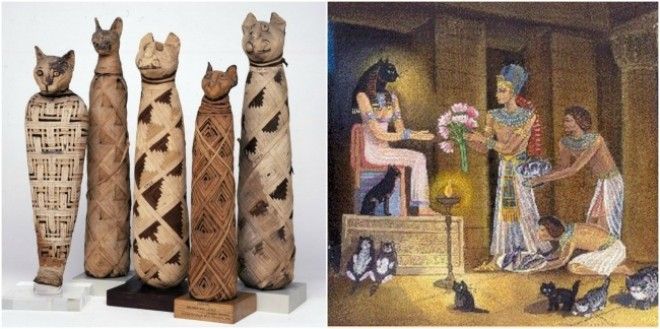However, the more we learn about their everyday life, the more this knowledge fascinates us because some practices of the ancients were too bizarre even for our modern standards.
1. Women used lead and sulfur to dye their hair.

People have been coloring their hair since ancient times, but the lack of knowledge in chemistry and incorrect use of the wrong substances sometimes ended badly for their health. The ancients also used plant materials to dye their hair, but the effect did not last long. The Greeks and Romans used a permanent hair dye that consisted of different chemicals including sulfur.

In the 1700s, the Italians liked to soak their long hair in corrosive solutions of lye to get a golden color for their locks. Many European ladies used saffron and sulfur powder to achieve great looks. Afghans also believed that dyeing their hair different colors could cure a headache.
2. Glass balls and ground rubber were used as breast implants.

Since ancient times, women have used different means to improve their beauty. The breasts were no exception. Some women put tropical treatments or homemade “growth creams” on their breasts to make them bigger. Others massaged coconut oil into their skin.
However, the first breast surgery was performed only in 1895 by Vincenz Czerny. The doctor needed to make the breasts of his patient even after he cut out a tumor. After that, doctors used different materials to enlarge women’s breasts: ivory, glass balls, ground rubber, and other fillers.
3. Animal droppings were used in medical treatments.

It may sound gross, but it’s a fact: ancient people used animal dung to cure and treat different diseases. For example, women in ancient Greece believed that crocodile dung could be used as a powerful contraceptive and inserted it into their vagina. In ancient Egypt, warriors applied animal dung to their wounds. Sheep droppings were used in Scottish folk medicine for treating smallpox, and fresh pig dung served to stop a nosebleed. Simple advice: do not try any of these at home.
4. Doctors drilled holes in people’s heads to release evil spirits.

The man doesn’t look good, does he? Doctors were always very curious about the human body and used several “proved” methods to cure many diseases. Trepanation (drilling holes) was one of them. Doctors believed they could cure illnesses such as convulsions, headaches, and infections. They thought that different diseases were caused by an evil spirit trapped inside a human’s head, and so they drilled holes to let the spirit out.
Luckily, this practice was almost completely abandoned by the end of the Middle Ages. Thorough research of some unearthed skulls showed that some patients even managed to survive after these extreme methods of treatment.
5. Women were not allowed to cry at funerals.

A regular funeral in ancient Rome started with a procession that walked the departed down the street. The weeping and crying relatives followed the procession. The more people that attended the funeral, the more respected a person was. Sometimes the family would hire special women who would weep to impress the crowd. To make their sadness believable, women would scratch their cheeks to draw blood and rip their hair.
Later on, this tradition was considered too extreme and negative. People were not allowed to hire professionals for weeping because “these acts invoked strong emotions and were incompatible with the idea of the quiet life of the citizen.”
6. Fathers could legally kill their daughters’ lovers.

Fathers had a very strong influence on their whole family and especially on their unmarried daughters. In fact, they had the right to choose a good husband for them. The rules were very strict, and a daughter had no right to have an intimate affair with anyone before her marriage.
A father had the legal right to kill his daughter’s lover (and even her) if he caught them committing adultery. If he killed only one of the lovers, he could be charged with murder. Curious fact: a Roman woman always belonged to her father’s family, even after marriage.
7. In ancient Rome, fathers could sell their sons into slavery. But only 3 times. Advertising

You read that right! No love lost in ancient Rome. The father was the head of the family and possessed absolute power over his wife, children, and household. Fathers also had the right to decide whether to keep newborn babies in the family.
Fathers were given the right to sell their sons into slavery. If the person who bought the “slave” no longer had need of him, he went back into his father’s home. However, he could only do this 3 times, otherwise, he was considered to be a bad parent. He could even have a family member put to death. Fortunately, few fathers were that cruel.
8. Doctors used garlic to test for pregnancy.

The lack of detailed medical knowledge in anatomy didn’t allow doctors to say for sure why some women could get pregnant and others couldn’t. However, they used several natural methods to test for pregnancy.
In 1350 BC, a woman was advised to moisten a wheat seed with urine. If the seeds sprouted, she was pregnant. Another way to perform a pregnancy test involved placing a clove of garlic or an onion in her vagina. The following morning, a doctor would smell the woman’s breath and claimed her pregnant if he could sense a garlic aroma on her breath. Thank goodness we have modern medicine today!
9. In ancient Egypt, people shaved off their eyebrows to mourn their cats.

People in ancient Egypt worshipped cats as their favorite animals and believed that cats brought good luck to the families they lived with. Bastet, the goddess of the home, cats, and fertility, was depicted either as a cat or as a woman with the head of a cat. Cats were sacred, and anyone who harmed them was sentenced to death.
Ancient Egyptian families would mourn the death of a family cat by shaving off their eyebrows. The cat’s body was embalmed with a wooden sculpted mask, and a tiny cat mummy was placed in a family tomb or in a cat cemetery.
Interesting fact: Alexander the Great, Julius Caesar, Genghis Khan, Napoleon, and Hitler suffered from ailurophobia, a fear of cats.
10. There were public lavatories in ancient Rome.

You already know that people in ancient Rome used all possible means to take care of their personal hygiene. They regularly attended public baths and toilets and used exfoliating cleansers and toilet sponges.
However, only a few wealthy people could afford to have a private bathroom or toilet in their house. The other 95% of the population used public lavatories that were made out of long rows of massive stone or wood with a hole cut every few feet. The constant running water from the baths flushed the waste to a sewage system. Since privacy was an unusual life aspect for the Romans, why would it be different in this situation?

